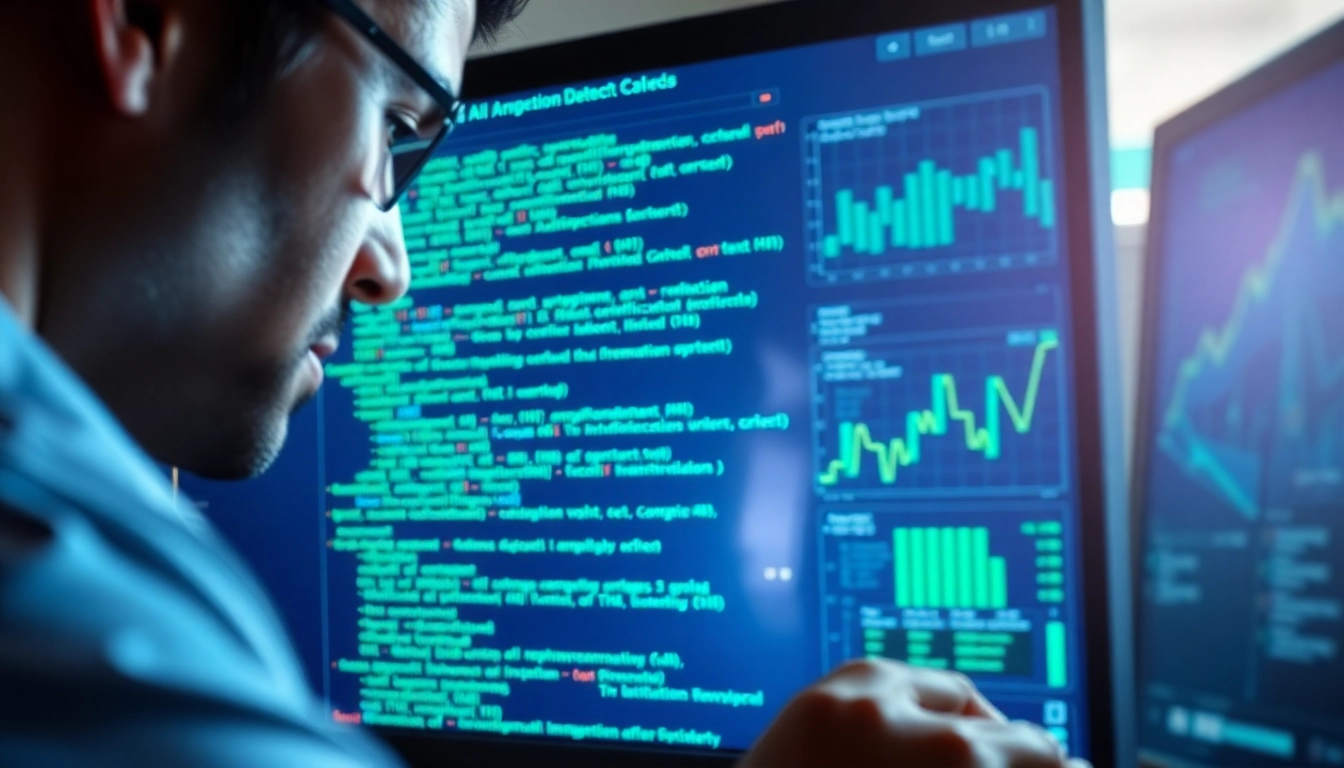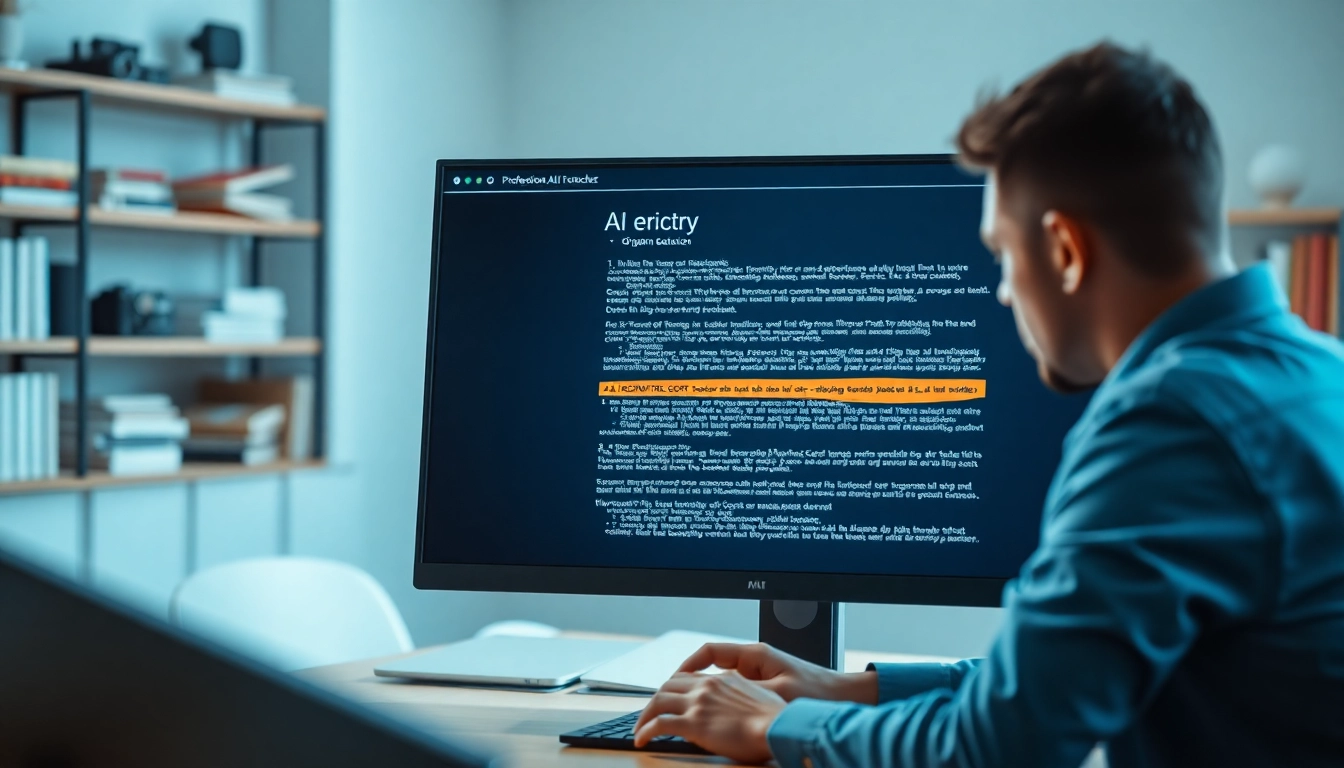
Introduction to AI Detection
In an era rapidly shaped by artificial intelligence (AI), the ability to discern between human-generated and AI-generated content has become increasingly crucial. This necessity arises not only from the technological advancements in AI but also due to the ethical, educational, and professional implications tied to the authenticity of content. Understanding ai detection involves grasping its definition, significance, and the variety of techniques utilized for this purpose.
What is AI Detection?
AI detection refers to the methodologies and technologies designed to identify whether a piece of text, audio, or visual content has been created by an AI system. It encompasses various forms of detection, applying machine learning algorithms and natural language processing (NLP) techniques to analyze patterns and characteristics of content. AI detection serves different purposes, such as academic integrity, content authenticity, and copyright enforcement, given the ability of AI models to produce human-like outputs.
The Importance of AI Detection
The significance of AI detection extends across numerous domains. In education, for instance, institutions must uphold academic integrity, ensuring that students complete their assessments and projects without the undue influence of AI tools. Within the realm of content creation, understanding whether an article or media output is AI-generated affects trust, quality, and intellectual property rights. Moreover, in business settings, distinguishing AI-generated reports from human analysis can shape decision-making processes and company policies. This multi-faceted impact underscores a global need for robust AI detection mechanisms.
Overview of Detection Techniques
Detecting AI-generated content utilizes several advanced techniques that capitalize on the unique attributes of AI systems. Key methods include statistical analysis, linguistic features analysis, and machine learning classifier techniques. These techniques may involve examining text coherence, complexity, style, and vocabulary usage, yielding insights into the likelihood of AI involvement.
How AI Detection Works
Key Components of AI Detection Algorithms
At the core of AI detection are algorithms engineered to parse and evaluate content. These algorithms typically consist of the following components:
- Feature Extraction: This involves identifying and quantifying relevant features within the text, such as randomness, repetitive phrases, and stylistic elements.
- Model Training: Utilizing datasets containing both AI-generated and human-generated content allows models to learn distinguishing features through supervised learning.
- Output Scoring: Algorithms produce scores indicating the probability of content being AI-generated based on the analyzed features, often resulting in a definitive classification.
Data Input Methods for Detection
Data input methods for AI detection vary widely depending on the chosen approach. Text input can be achieved through simple text fields or uploaded files. Audio and video AI detection systems might require advanced techniques like audio waveform analysis or visual pattern recognition to ascertain the authenticity of the content. The diversity in input methods significantly affects the algorithm’s overall effectiveness and adaptability.
Common Metrics Used in AI Detection
To determine the efficacy of AI detection algorithms, various metrics are employed, including:
- Accuracy: This measures the proportion of correctly identified instances (both true positives and true negatives) against the total number of instances tested.
- Precision and Recall: Precision assesses the percentage of true positive results against all positive identifications, while recall measures the ability to identify all relevant instances.
- F1 Score: This harmonizes precision and recall into a single metric, balancing the trade-offs between the two.
Applications of AI Detection
AI Detection in Education
In educational environments, AI detection plays a vital role in maintaining academic integrity. With the increasing adoption of AI tools for writing and research, educators leverage detection technologies to identify instances where students may have improperly utilized these tools in their assignments. Institutions frequently implement such measures to foster a culture of originality and critical thinking. Incorporating AI detection tools into the assessment infrastructure helps to guide students in ethical practices surrounding their studies.
Impact on Content Creation
The realm of content creation, from journalism to marketing, is heavily influenced by AI as well. Writers and marketers utilize AI tools for generating ideas, drafting content, and optimizing language. However, the presence of AI poses challenges regarding originality and authenticity. As organizations strive to maintain high-quality content, AI detection technologies ensure that output adheres to ethical guidelines and protects the integrity of creative expressions. Furthermore, advertisers often need to discern AI-generated creative works from traditionally crafted pieces, which impacts brand storytelling and engagement.
AI Detection in Business Environments
In the business realm, AI detection can have far-reaching implications, especially concerning data analytics and reporting. Automated reports and analyses generated by AI systems require verification to maintain data integrity and accuracy. By employing detection tools, companies can ensure that important strategic decisions are based on reliably sourced information. Moreover, as businesses increasingly rely on AI for customer service interactions and content generation, the ability to assess these outputs fosters trust and strengthens company-customer relationships.
Challenges in AI Detection
Limitations of Current Technologies
Despite advances in AI detection technologies, several challenges persist. Algorithms can struggle to accurately discern AI-generated content, especially as AI systems improve their mimicry of human writing styles. Moreover, the adaptive nature of AI models can render detection outdated swiftly; thus, ongoing updates to detection algorithms remain fundamental. These limitations necessitate a nuanced understanding of AI detection’s capabilities, encouraging users to interpret results judiciously.
Common Misconceptions
A common misconception surrounding AI detection is the belief that all AI-generated text is easily detectable. While current technologies can identify many instances effectively, sophisticated models may evade detection. Another misconception is that AI detection can provide definitive answers regarding authorship, while in truth, it only offers probabilistic scores that indicate likelihood rather than certainty.
Future of AI Detection Solutions
The future of AI detection presents opportunities for enhanced accuracy and user-friendly interfaces. As AI technologies evolve, so too must detection methods. Continued research into hybrid algorithms that leverage multiple detection strategies—such as text analysis, sentiment analysis, and contextual understanding—may prove critical. Innovations in AI detection tools will focus on improved adaptability to recognize evolving AI-generated content characteristics.
Best Practices for Using AI Detection Tools
Selecting the Right Tool
Choosing the appropriate AI detection tool requires careful consideration. Factors such as the nature of the content (text, audio, or video), the intended use (academic, professional, or personal), and the specific detection features should inform decisions. Tools that offer comprehensive analysis and transparent scoring methods are typically preferable, as they provide insights into their processes and the reasoning behind their conclusions.
Interpreting Detection Results Effectively
Understanding the output of AI detection tools is crucial in making informed decisions. Users should be equipped to analyze scores critically, considering both precision and recall metrics. It’s important to recognize the potential for false positives and negatives. Using these detection results as part of a broader assessment strategy, rather than as standalone evidence, fosters more comprehensive interpretations.
Ethical Considerations in AI Detection
Ethics play a pivotal role in the realm of AI detection. Users of detection tools must navigate the balance between maintaining integrity and respecting privacy. Care should be taken to guard against misuse of detection technologies that could unjustly penalize individuals or organizations. Reinforcing ethical guidelines surrounding AI detection ensures fair application in diverse fields, fostering trust and accountability in AI systems generally.






